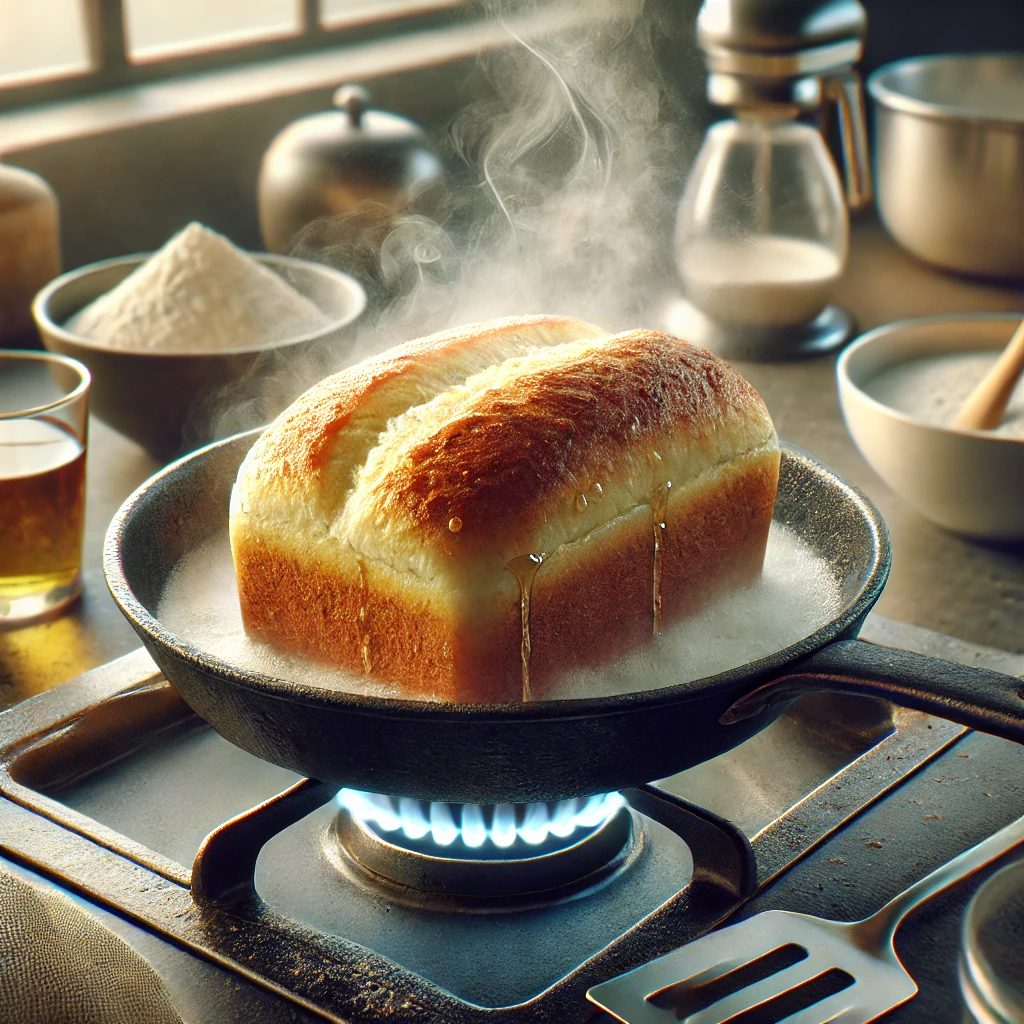Believe it or not, you don’t need an oven to bake delicious, golden-crusted bread. Whether you live in a small space, are traveling, or simply want to try something new, baking bread in a frying pan (or skillet) is not only possible—it’s easy, fun, and incredibly satisfying.
In this article, we’ll explore several methods and recipes for making bread using a frying pan. From basic flatbreads to fluffy skillet loaves, you’ll discover how to get great results using just your stovetop.
1. Why Use a Frying Pan?
Frying pan bread is ideal when:
- You don’t have access to an oven.
- It’s too hot to turn the oven on.
- You want something fast and simple.
- You love trying creative cooking methods.
You can achieve a crisp exterior and soft interior by using the right technique and pan.
2. What Kind of Pan Works Best?
Choose a heavy-bottomed pan to retain and evenly distribute heat.
Recommended options:
- Cast iron skillet: Holds heat well and creates a crisp crust.
- Nonstick frying pan: Great for beginners, especially for softer doughs.
- Stainless steel pan: Works with a bit of oil or parchment paper to avoid sticking.
Avoid thin aluminum pans—they burn easily and don’t retain heat evenly.
3. Dough Types That Work Well in a Frying Pan
You can adapt many dough types to stovetop cooking. Some are more suited than others.
Best options:
- Flatbreads (like naan, pita, tortillas)
- Soda bread (baking soda as leavening)
- No-yeast skillet bread (quick rise with baking powder)
- Yeasted dough (shaped small, cooked covered)
- Sourdough discard bread (great for bubbly, flavorful results)
Doughs that don’t require long oven spring or thick crusts are ideal.
4. Basic No-Oven Skillet Bread Recipe
Ingredients:
- 2 cups all-purpose flour
- 2 tsp baking powder
- ½ tsp salt
- ¾ cup water (adjust as needed)
- 1 tbsp oil or butter (optional, for flavor)
Instructions:
- Mix all ingredients until a soft dough forms.
- Divide into 4–6 pieces and shape into rounds.
- Heat skillet over medium heat. Brush lightly with oil.
- Cook each round 2–3 minutes per side until golden brown and cooked through.
Serve warm with butter, jam, or as sandwich bread.
5. Yeasted Skillet Bread (Fluffier Option)
For something more like a traditional loaf, try a small yeasted dough.
Steps:
- Make a basic bread dough (flour, yeast, water, salt).
- Let it rise once.
- Shape into a thick round or oval.
- Place in a warm, lightly oiled pan.
- Cover with a lid and cook over very low heat for 10–15 minutes per side.
- Flip carefully once the bottom is browned and firm.
Covering traps steam, helping it rise and cook through without drying out.
6. Tips for Best Results
- Use a lid: It traps steam and heat, mimicking an oven.
- Keep heat low: Bread takes longer but cooks evenly without burning.
- Flip carefully: Use a spatula to gently turn the loaf or round bread.
- Don’t overcrowd: Cook one or two at a time for better results.
- Check doneness: Tap the bread; it should sound hollow. Or insert a skewer—it should come out clean.
7. Stuffed or Filled Frying Pan Breads
Want to get more creative? Try stuffing your frying pan breads!
Ideas:
- Cheese and herb-stuffed flatbreads
- Sweet cinnamon sugar swirl breads
- Ground meat or veggie-filled wraps
- Nutella and banana skillet pockets
Roll the dough, add filling, fold or seal, and cook just like regular rounds.
8. Quick Breakfast or Snack Ideas
Frying pan breads are perfect for:
- Breakfast toast: Split and toast with butter or jam.
- Mini pizzas: Add sauce and toppings, cover until cheese melts.
- Sandwiches: Use two rounds as sandwich bread.
- Dips and soups: Serve warm with hummus, chili, or lentil soup.
They’re also great for camping, dorms, and travel kitchens.
9. Storing and Reheating
Store leftovers in a sealed container or bag at room temperature for up to 2 days.
To reheat:
- Warm in a dry skillet for 1–2 minutes per side.
- Microwave for 15 seconds (less crispy).
- Toast for added crunch.
You can also freeze portions and reheat as needed.
Final Thoughts
Baking bread in a frying pan proves that with a little creativity, you can make incredible homemade bread almost anywhere. Whether you’re cooking on a stovetop, over a fire, or in a tiny kitchen, these methods give you flexibility and great flavor with minimal fuss.
So the next time you crave fresh bread but don’t want to use the oven, grab a pan—and get cooking.
